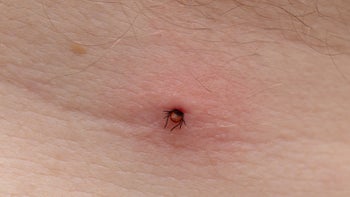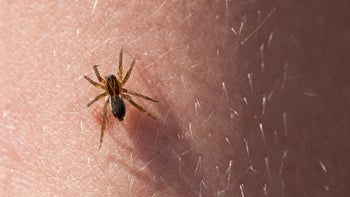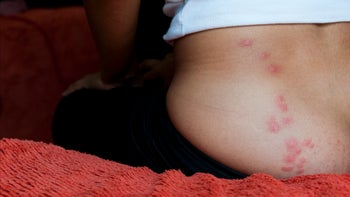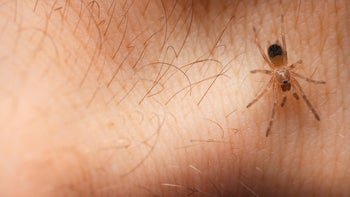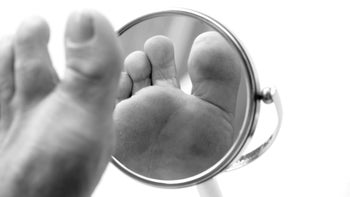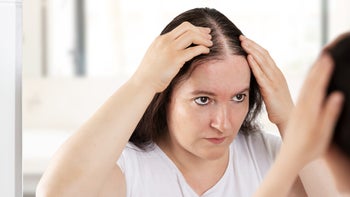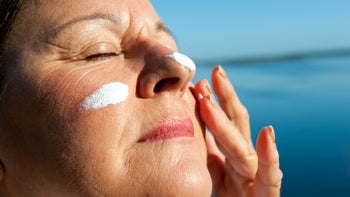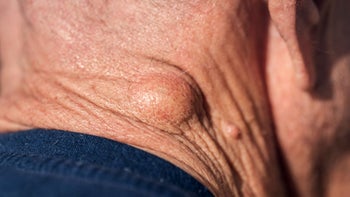
What Causes Nail Splitting and How to Fix It: A Complete Guide With Images
Key takeaways:
Splitting fingernails or toenails are a sign of brittle and weak nails.
Nails can split vertically or horizontally.
There are many causes: aging, pregnancy, nail polish, injuries, and even some skin conditions.
You can fix a split nail with clear nail polish or nail glue. But these are temporary solutions. Figuring out what’s causing your split nails is the first step to growing healthy nails.
Table of contents
Strong healthy nails don’t just look nice. They also protect your fingertips against injuries that can happen during everyday life.
Nail splitting can be random or the result of a recent injury. But a split nail can also be a sign of a nail infection, an underlying medical condition, or even a vitamin deficiency. Keep reading to learn more about why your fingernails and toenails may split, and how you can fix your split nails.
What do split nails look like?
Split nails look like part of your nail is peeling or cracked. You might notice this only at the edge of your nail, but the split can run along your entire nail. Some people also notice lines or grooves in their nails, too.
Your nail is made up of several layers of keratin pressed together. When a nail splits, some of the keratin layers separate from the rest of the layers. This makes your nail look like it’s splitting or peeling.
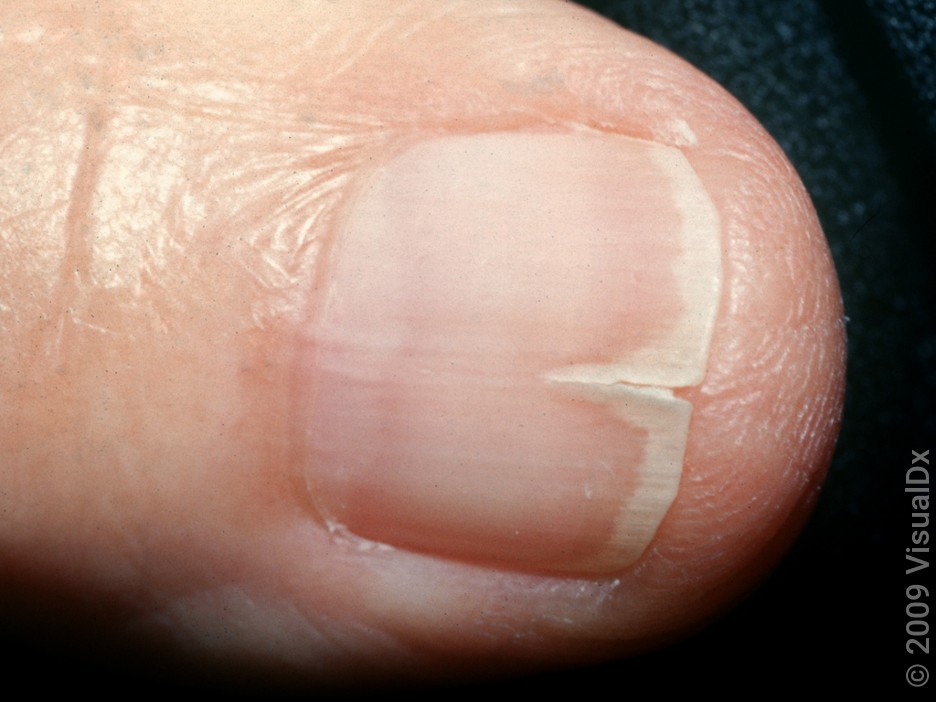

Nails are more prone to splitting if they're brittle or fragile. If you have weak nails, you may notice other nail changes like:
Vertical or horizontal grooves
Pitting
Yellow or brown color changes
Are your nails cracked or thickened? It could be nail fungus or less commonly, psoriasis. See pictures of psoriasis and nail fungus, and how to tell the difference.
Your nails can tell you a lot about your health: Here’s what these common nail changes might mean, including some you don’t want to ignore.
Brittle or breaking nails? Find out the main causes for weak or brittle nails, and how to restore nail strength and health.
What causes nails to split?
Nails split when they’re damaged, weak, or brittle. Many things can cause split nails, and the way your nails split can be an important clue to the cause.
Nails can split horizontally (onychoschizia) or vertically (onychorrhexis). Horizontally split nails are usually a sign that there’s damage to proteins that connect the nail layers.
On the other hand, vertically split nails can be a sign that there’s damage to the nail matrix, or the part of the finger that creates the nail.
Search and compare options
Keep in mind that sometimes, nails split for no good reason. It’s just something that happens to everyone from time to time. But if your nails split often, it could be a sign that something more is going on.
Let’s take a look at some common reasons for split nails.
1. Nail fungus
Nail fungus or onychomycosis develops when ringworm infects your nails. The fungus damages the nail by destroying keratin. This can lead to nail discoloration, white spots, and splitting finger and toenails. Over time, the fungus can attack the nail matrix, and nails grow weak and brittle.
2. Nail injury
Nail injury can cause horizontal splitting. Keep in mind that it doesn’t take a major nail injury to cause nail splitting. You’re also more likely to develop nail splitting if your hands and nails get wet often because of your job. It’s a good idea to protect your nails and hands by wearing gloves if your hands are often exposed to water and wet conditions.
3. Aging
As you get older, your nails change. They grow more slowly and are more likely to split, crack, and discolor. You may notice both horizontal and vertical nail splitting as you get older. Many people take supplements with biotin and collagen to improve their hair and nail health.
4. Nail polish
You may love the look of a fresh manicure, but nail polish and removers can weaken your nails. Some nail polish removers may be harsher than others, but over time, they can all lead to split nails. Gel acrylics can also cause nail splitting. Giving your nails a break from nail cosmetics can help you avoid split nails.
Read more like this
Explore these related articles, suggested for readers like you.
5. Psoriasis and eczema
Some skin conditions can affect nails, too. Eczema and psoriasis can cause brittle nails that split and crack. For some people, only one or two nails may be affected. But for others, all their nails may be involved.
6. Vitamin and nutrient deficiencies
Some vitamin deficiencies can cause nail splitting. If you’re not getting enough biotin or calcium, you may notice nail splitting and other nail changes. Nail splitting can also be a sign of low iron levels (anemia). Before starting any supplements, talk with your healthcare professional to see if you have any deficiencies.
7. Chemotherapy
Chemotherapy medications can cause brittle, splitting nails. Chemotherapy medications attack fast-growing cells. This helps slow down the growth of cancer cells, which grow quickly. But it also leads to the damage of normal cells that grow fast — like nail or hair cells.
8. Pregnancy
If you’re pregnant, your body needs extra vitamins and minerals to keep up with the needs of a growing baby. Many people notice split nails during pregnancy if they aren’t getting enough of these vitamins.
9. Thyroid issues
Thyroid problems can also cause brittleness and nail splitting. This is more common in people with low thyroid levels (hypothyroidism), but it can also happen when people have high thyroid levels (hyperthyroidism).
10. Picking or biting
Nail biting and picking can lead to nail splitting and brittleness. People aren’t always aware that these habits can lead to unwanted nail changes. Picking, pulling, or removing the nail cuticle can also contribute to brittle, unhealthy nails.
What can cause serious nail splits?
If you develop a serious nail split that involves the whole nail (like from a serious nail or finger injury), you may need to see a healthcare professional. They’ll check to see if your nail matrix is healthy or injured. They may recommend removing the entire nail. If the matrix is healthy, the nail should grow back. But if the matrix is injured, the nail may not grow back normally or it may not grow back at all.
How do you fix a split nail?
Fixing a split nail is pretty simple. If your nail is split horizontally at the edge of your nail, you can trim or file down the jagged edges and let your nail grow back naturally.
If you have a bigger split, you can apply nail glue or clear nail lacquer to hold the keratin together until your nail grows out. Then you can trim or file off the split.
If all your nails are splitting or you notice that your nails are brittle or fragile, that’s a good reason to see your primary care provider. It could be a sign that a medical condition or vitamin deficiency is causing your nail splitting.
Can you lower your risk of split fingernails and toenails?
If an infection, vitamin deficiency, or medical condition is causing your nails to split, treating your condition should help your nails grow back strong and healthy.
If you don’t know why your nails are splitting, or the splitting is due to aging, you may not be able to prevent nail splitting completely.
But there are a few strategies you can try to help strengthen your nails:
Eat a balanced diet. A diet high in fruits and vegetables provides more vitamins and minerals than one high in refined sugars and highly processed foods.
Consider taking biotin supplements. Biotin (vitamin B7) may improve nail strength, but studies are mixed. Yet, some studies on biotin’s effect on nail health are encouraging, so it may be worth a try.
Try taking collagen supplements. Collagen is a protein that strengthens nails. There’s some evidence that daily collagen supplements can improve nail strength and nail growth. You can also try adding collagen-rich foods into your diet.
Wear gloves. Wearing gloves while working is always a good idea to protect your nails. However, avoid wearing tight gloves over wet hands, as this can also cause brittle nails. When doing wet work, it’s best to wear cotton gloves under vinyl gloves.
Consider a moisturizer. There are some moisturizers that can help improve the water content of nails, especially if your brittle nails are caused by excessive dryness. Try products that contain petroleum jelly, lanolin, propylene glycol, or glycerin.
Try a topical gloss. There are many topical agents on the market that may help harden and strengthen nails. Some of these include products containing silanediol salicylate with Pistacia lentiscus gum or hydroxypropyl chitosan.
The bottom line
Split nails happen to everyone from time to time. Sometimes you can’t avoid them. But, nails that keep splitting can also signal an underlying health concern. Nail glue or clear nail polish can help fix a split nail for a short time. But if your nails split often, this is worth raising with your medical care team at your next appointment.
Why trust our experts?



Images used with permission from VisualDx (www.visualdx.com).
References
American Osteopathic College of Dermatology. (n.d.). Brittle splitting nails.
Baran, R., et al. (2004). Nail fragility syndrome and its treatment. Journal of Cosmetic Dermatology.
Bodman, M. A., et al. (2024). Onychomycosis. StatPearls.
Chessa, M. A., et al. (2020). Pathogenesis, clinical signs and treatment recommendations in brittle nails: A review. Dermatology and Therapy.
Cohen, P. R. (2022). Nail-associated body-focused repetitive behaviors: Habit-tic nail deformity, onychophagia, and onychotillomania. Cureus.
Hexsel, D., et al. (2017). Oral supplementation with specific bioactive collagen peptides improves nail growth and reduces symptoms of brittle nails. Journal of Cosmetic Dermatology.
Institute for Quality and Efficiency in Health Care. (2021). In brief: Structure of the nails. InformedHealth.org.
Lipner, S. R., et al. (2018). Biotin for the treatment of nail disease: What is the evidence? The Journal of Dermatological Treatment.
MedlinePlus. (2022). Aging changes in nails.
National Institutes of Health Office of Dietary Supplements. (2022). Biotin.
Piraccini, B. M, et al. (2013). Drug-related nail disease. Clinics in Dermatology.
Piraccini, B. M, et al. (2020). Ciclopirox hydroxypropyl chitosan (HPCH) nail lacquer: A review of its use in onychomycosis. Dermatology and Therapy.
Piraccini, B. M, et al. (2020). Clinical and instrumental objective evidence of the efficacy of a new water-based nail-strengthening solution containing Pistacia lentiscus and hyaluronic acid applied for up to 6 months to improve the appearance of weak, brittle nails. Dermatology and Therapy.
Schafer, A. L., et al. (2016). Hypocalcemia: Diagnosis and treatment. EndoText.
Tully, A. S., et al. (2012). Evaluation of nail abnormalities. American Family Physician.







